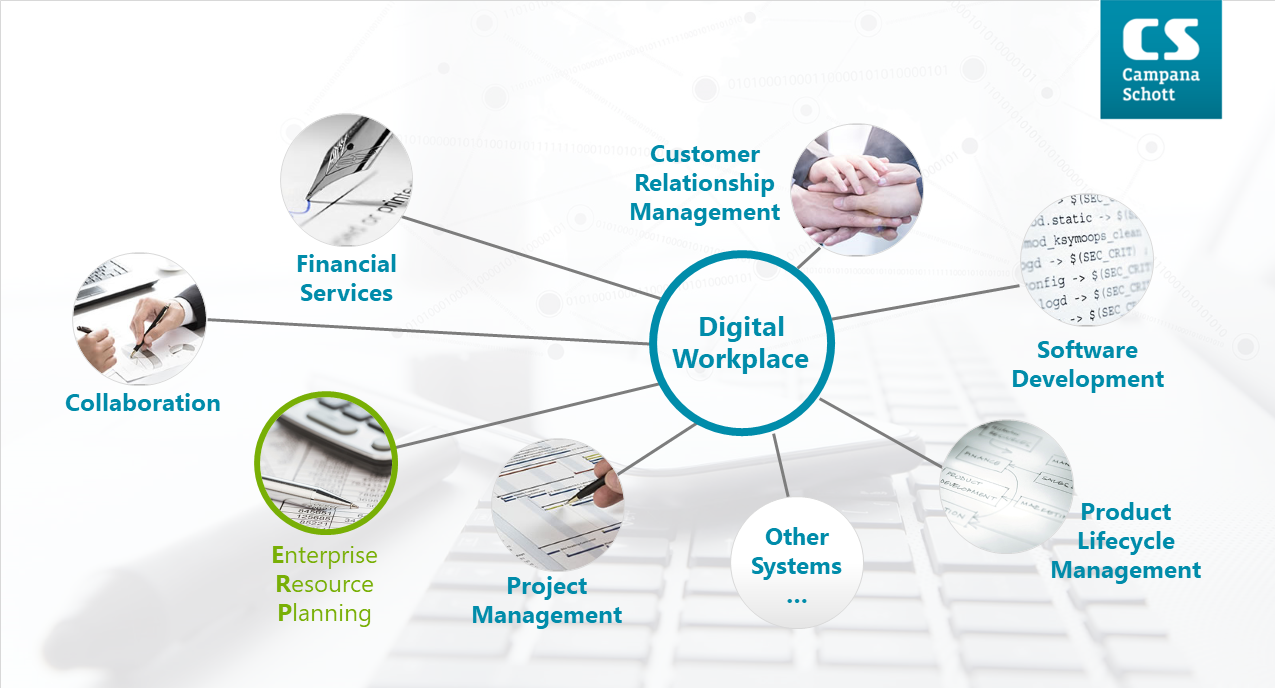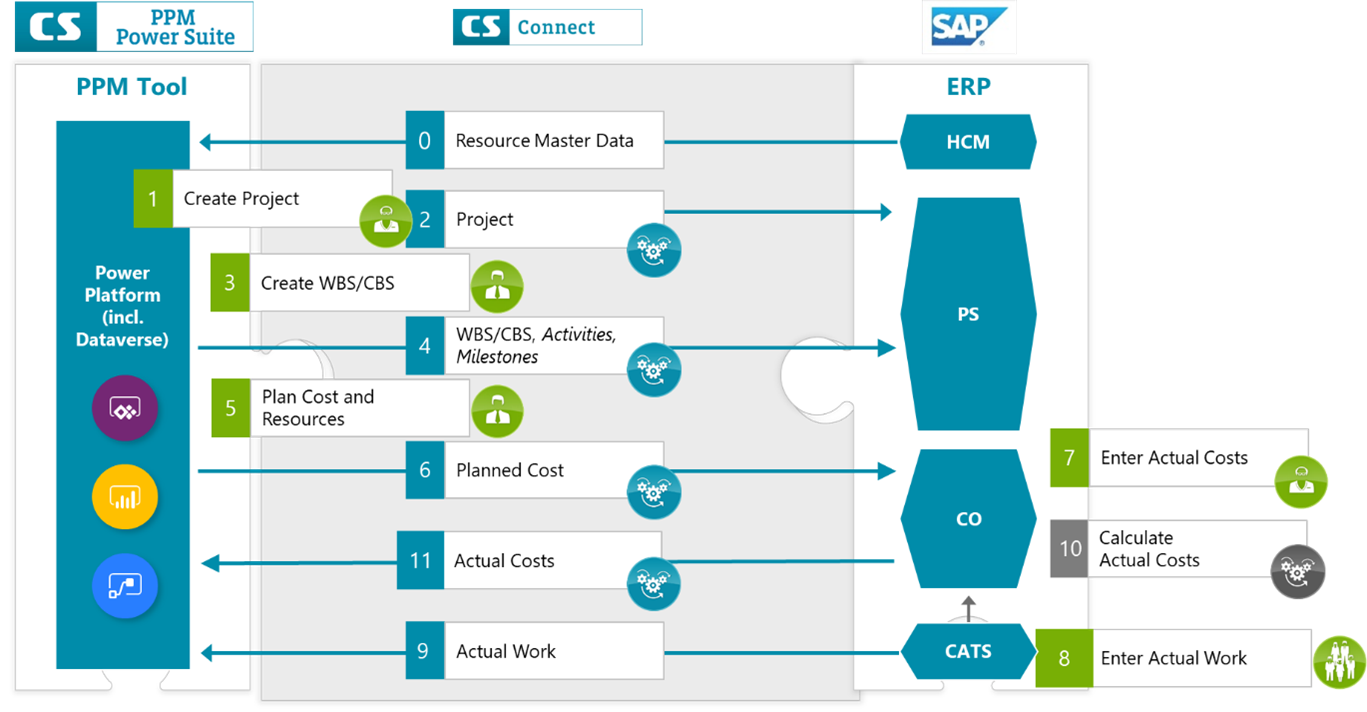Enterprises are constantly facing the challenge of integrating complex IT systems. One widely known example of constant complexity can be seen in the integration of enterprise resource planning systems (ERPs). The world’s leading ERP software vendor SAP is popular and globally utilized, but even SAP solutions are equally affected by the difficulty of taming complexity, e. g. when in global companies multiple SAP ERP instances are utilized with differing configurations.
SAP has been known since the company’s beginnings for its modular approach of integrating different IT systems. However, connecting different data sources or modules is a significant hurdle, in particular when the respective deployment strategy (on-prem vs. cloud) is not clear. Continuous availability and real-time data processing are for most business processes also integral components in the functionality of ERP systems. Modularity and accessibility of real-time data are not the only challenges that ERP solutions encounter when it comes to accelerating the process of integration projects, but also the general business goals and technological advancement.
One important parallel technological and current advancement in times of digitization is the continuous emergence of so called of “low-code, no-code” (LCNC) platforms. Currently, the Power Platform provided by Microsoft is considered to be one of the most stable, comprehensive and easy-to-use LCNC platforms on the market. The Power Platform enables the acceleration of analyzing data (Power BI), developing business apps (Power Apps), automating business processes (Power Automate) and utilizing digital agents (Power Virtual Agents). Hence, the ongoing growth of LCNC platforms like the widely used Microsoft Power Platform also lead to the implementation of more and more Business Apps. And at the end these ever increasing amount of Business Apps lead to a growing number of integration needs with SAP ERP systems.
Surprisingly, there are still few easily configurable connectors between the Power Platform and SAP solutions. There is an “SAP ERP” connector from Microsoft to connect Power Platform and SAP, but it is limited in its capabilities, and it also does not provide the benefits of a comprehensive middleware product for integration purposes.
For this reason, we at Campana & Schott have already extended our longstanding middleware called “CS Connect” by a Power Platform adaptor in addition to the pre-existing and plentiful options to integrate various SAP modules like PS, CO, CATS, HCM and others. This innovation now enables companies to connect various Business Apps based on the Power Platform with complex SAP solutions for a series of different use cases. Simultaneously it is easy to adapt these interfaces through custom configuration. CS Connect is a product for simple connection between systems and automates bidirectional data exchange, in which the Power Platform can also be individually connected. CS Connect functionalities include an extract, transform and load (ETL) tool, where data from one system are transferred to another one plus further functionality for e. g. monitoring, logging, notifications and interface orchestration. Furthermore, CS Connect also offers the capability to realize cloud-based, on-premises or hybrid scenarios for integration use cases. Finally, CS Connect also supports the integration not only with SAP ERP, but also with S/4HANA, which is becoming more important as according to the 2020 IDC study, 48% of companies are currently planning to migrate from SAP legacy system to S/4HANA. Hence, many customers want to understand if their current integration concepts not only work for their SAP ERP legacy systems, but also for their future S/4 HANA platforms.
But how do we integrate CS Connect with Power Platform? At Campana & Schott we have built a comprehensive solution for Project-, Program und Portfolio Management (PPM) based on the Power Platform called “CS PPM Power Suite”. For a PPM solution like this a whole set of different integration use cases to interface with SAP do exist. The following figure gives an insight into a typical set up of an integration between Power Platform and SAP in the context of integrated PPM processes.
.
Companies will benefit in this case from an accelerated and optimized process for project structuring, project cost planning and tracking, resource management, etc. Double work in multiple systems as well as continuously upcoming data inconsistencies are avoided. User groups like Project Managers (PPM solution) and Project Controllers (SAP ERP) can focus on one tool instead of having the need to use multiple systems at the same time.
Conclusion
The integration of SAP solutions with Power Platform including all its components (Power Automate, Power BI, Power Apps and Virtual Agents) represents a highly value driven opportunity, where real-time data from multiple sources and can be made easily accessible. In addition, the technical implementation can be adapted quickly, requiring low to no programming experience to build an application, data visualization or automation that is able to reference SAP instances as well. In summary, when it comes to the core applications of SAP systems, CS Connect provides a flexible, secure and simple solution for complex ERP integration through the easy utilization of customizable connector configuration plus typical middleware features.
Author
Additional links
CS Connect
CS PPM Power Suite
CS PPM Power Suite Sustainability Edition



